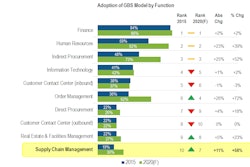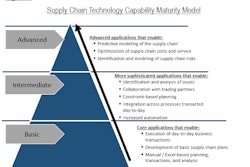But world-class companies spend 25 percent less by using HR outsourcing to cut transaction processing costs
Atlanta — November 16, 2005 — In most cases, human resources (HR) outsourcing leads to higher costs at typical companies, despite the fact that world-class HR organizations rely on selective outsourcing to reduce costs in highly repetitive transaction-oriented areas, according to newly released research from business process advisory firm The Hackett Group.
Hackett's newest Book of Numbers research volume shows a correlation between greater spending on outsourcing and increased total HR cost per employee at typical companies. Hackett found that this is driven, in part, by common mistakes made by these companies during the process, such as neglecting to streamline processes beforehand and retaining existing internal staff responsible for the outsourced function. In contrast, world-class companies are able to use outsourcing effectively as part of their business process sourcing mix to cut transactional costs and enable increased internal focus on strategic activities.
Overall, Hackett found that world-class companies now spend 25 percent less than their peers on HR and rely on 16 percent fewer HR staff. World-class HR organizations are also achieving results superior to typical companies in both quality and the effectiveness of their operations, with lower levels of complexity and more streamlined processes that allow them to fill open positions faster, see lower voluntary termination rates and demonstrate greater alignment with their company's business goals.
Outsourcing More, Spending Less
Hackett's research showed that at typical companies, a correlation exists between increased outsourcing as a percentage of total spending and increased overall HR costs per employee. But world-class HR organizations actually outsource more than typical companies in low value-added transactional areas, using outsourcing to drive down costs. World-class HR organizations dedicate nearly half of their overall transactional process costs to outsourcing, 26 percent more than typical companies. As a result they are able to spend 19 percent less per employee in this area.
"These findings appear to contradict each other. But on closer inspection, they don't," said Patty Miller. Hackett senior business advisor. "Typical companies often outsource for the wrong reasons, in an attempt to lower costs and fix processes they know are broken. This is almost always a mistake. In addition, they frequently haven't standardized and simplified their operations, and the resulting complexity drives increased outsourcing costs. Finally, they often retain redundant internal labor after outsourcing, rather than using it as an opportunity to refocus their internal staff."
According to Hackett HR Practice Leader Stephen Joyce: "By contrast, world-class HR organizations take a very different approach toward outsourcing. They understand that effective business process sourcing is about aligning their service delivery models with business processes and responsibilities. They carefully evaluate individual business processes and make decisions relating to outsourcing and other options based on factors like relative cost, strategic value and non-performance risk."
For low-value transactional areas, Joyce said, world-class HR organizations implement best practices and streamline activities, use self-service technology to reduce or eliminate them where possible, then selectively outsource, making sure to hold the outsourcers accountable for their performance. "Finally, they focus internal resources on higher-value areas, such as total rewards planning, strategic workforce planning and workforce development, enabling them to provide greater strategic value to their company."
Spending Less, Achieving More
Hackett's Book of Numbers research found that a significant cost gap exists between world-class and typical companies, with world-class companies now spending 25 percent less than their peers ($1,422 versus $1,895/company employee). World-class companies also now operate with 16 percent fewer staff (11.88 versus 14.11 HR staff/1,000 employees).
In addition, world-class HR organizations achieve superior results across a range of other measures. They reduce complexity, relying on significantly fewer health and welfare plans, savings plans and compensation plans than typical companies.
World-class HR organizations also fill open positions for managers, professionals, and clerical staff up to 31 percent faster than typical companies and see 66 percent fewer voluntary terminations. This lower turnover rate has benefits on two levels. It shrinks the direct cost of administering the employee lifecycle processes, including hiring, orientation training, enrollment programs and termination processes, and also reduces the time and resources necessary to recruit and train new hires.
Finally, Hackett's research showed that world-class companies are also much more closely aligned with their companies' business goals and are 67 percent more likely to have an explicit workforce strategy in place.
Additional Articles of Interest
— Leading companies are using supply chain principles to deploy employee talent. Read more in "Finding a Needle in a Haystack," an SDCExec.com exclusive.
— Is your company looking closely at procurement outsourcing, but doesn't quite know where to begin? These 10 steps are a good place to start for any finance professional who is studying this growing market. Read the article "Procurement Outsourcing: The 10 Things Finance Professionals Want to Know," an SDCExec.com exclusive.
— A survey of consumer healthcare decision-makers shows opportunities for manufacturers to gain competitive advantage by focusing on some key points in their supply chains. Read more in the SDCExec.com In Depth article "Leveraging the Supply Chain for Competitive Advantage."
Atlanta — November 16, 2005 — In most cases, human resources (HR) outsourcing leads to higher costs at typical companies, despite the fact that world-class HR organizations rely on selective outsourcing to reduce costs in highly repetitive transaction-oriented areas, according to newly released research from business process advisory firm The Hackett Group.
Hackett's newest Book of Numbers research volume shows a correlation between greater spending on outsourcing and increased total HR cost per employee at typical companies. Hackett found that this is driven, in part, by common mistakes made by these companies during the process, such as neglecting to streamline processes beforehand and retaining existing internal staff responsible for the outsourced function. In contrast, world-class companies are able to use outsourcing effectively as part of their business process sourcing mix to cut transactional costs and enable increased internal focus on strategic activities.
Overall, Hackett found that world-class companies now spend 25 percent less than their peers on HR and rely on 16 percent fewer HR staff. World-class HR organizations are also achieving results superior to typical companies in both quality and the effectiveness of their operations, with lower levels of complexity and more streamlined processes that allow them to fill open positions faster, see lower voluntary termination rates and demonstrate greater alignment with their company's business goals.
Outsourcing More, Spending Less
Hackett's research showed that at typical companies, a correlation exists between increased outsourcing as a percentage of total spending and increased overall HR costs per employee. But world-class HR organizations actually outsource more than typical companies in low value-added transactional areas, using outsourcing to drive down costs. World-class HR organizations dedicate nearly half of their overall transactional process costs to outsourcing, 26 percent more than typical companies. As a result they are able to spend 19 percent less per employee in this area.
"These findings appear to contradict each other. But on closer inspection, they don't," said Patty Miller. Hackett senior business advisor. "Typical companies often outsource for the wrong reasons, in an attempt to lower costs and fix processes they know are broken. This is almost always a mistake. In addition, they frequently haven't standardized and simplified their operations, and the resulting complexity drives increased outsourcing costs. Finally, they often retain redundant internal labor after outsourcing, rather than using it as an opportunity to refocus their internal staff."
According to Hackett HR Practice Leader Stephen Joyce: "By contrast, world-class HR organizations take a very different approach toward outsourcing. They understand that effective business process sourcing is about aligning their service delivery models with business processes and responsibilities. They carefully evaluate individual business processes and make decisions relating to outsourcing and other options based on factors like relative cost, strategic value and non-performance risk."
For low-value transactional areas, Joyce said, world-class HR organizations implement best practices and streamline activities, use self-service technology to reduce or eliminate them where possible, then selectively outsource, making sure to hold the outsourcers accountable for their performance. "Finally, they focus internal resources on higher-value areas, such as total rewards planning, strategic workforce planning and workforce development, enabling them to provide greater strategic value to their company."
Spending Less, Achieving More
Hackett's Book of Numbers research found that a significant cost gap exists between world-class and typical companies, with world-class companies now spending 25 percent less than their peers ($1,422 versus $1,895/company employee). World-class companies also now operate with 16 percent fewer staff (11.88 versus 14.11 HR staff/1,000 employees).
In addition, world-class HR organizations achieve superior results across a range of other measures. They reduce complexity, relying on significantly fewer health and welfare plans, savings plans and compensation plans than typical companies.
World-class HR organizations also fill open positions for managers, professionals, and clerical staff up to 31 percent faster than typical companies and see 66 percent fewer voluntary terminations. This lower turnover rate has benefits on two levels. It shrinks the direct cost of administering the employee lifecycle processes, including hiring, orientation training, enrollment programs and termination processes, and also reduces the time and resources necessary to recruit and train new hires.
Finally, Hackett's research showed that world-class companies are also much more closely aligned with their companies' business goals and are 67 percent more likely to have an explicit workforce strategy in place.
Additional Articles of Interest
— Leading companies are using supply chain principles to deploy employee talent. Read more in "Finding a Needle in a Haystack," an SDCExec.com exclusive.
— Is your company looking closely at procurement outsourcing, but doesn't quite know where to begin? These 10 steps are a good place to start for any finance professional who is studying this growing market. Read the article "Procurement Outsourcing: The 10 Things Finance Professionals Want to Know," an SDCExec.com exclusive.
— A survey of consumer healthcare decision-makers shows opportunities for manufacturers to gain competitive advantage by focusing on some key points in their supply chains. Read more in the SDCExec.com In Depth article "Leveraging the Supply Chain for Competitive Advantage."
- More research from The Hackett Group.











